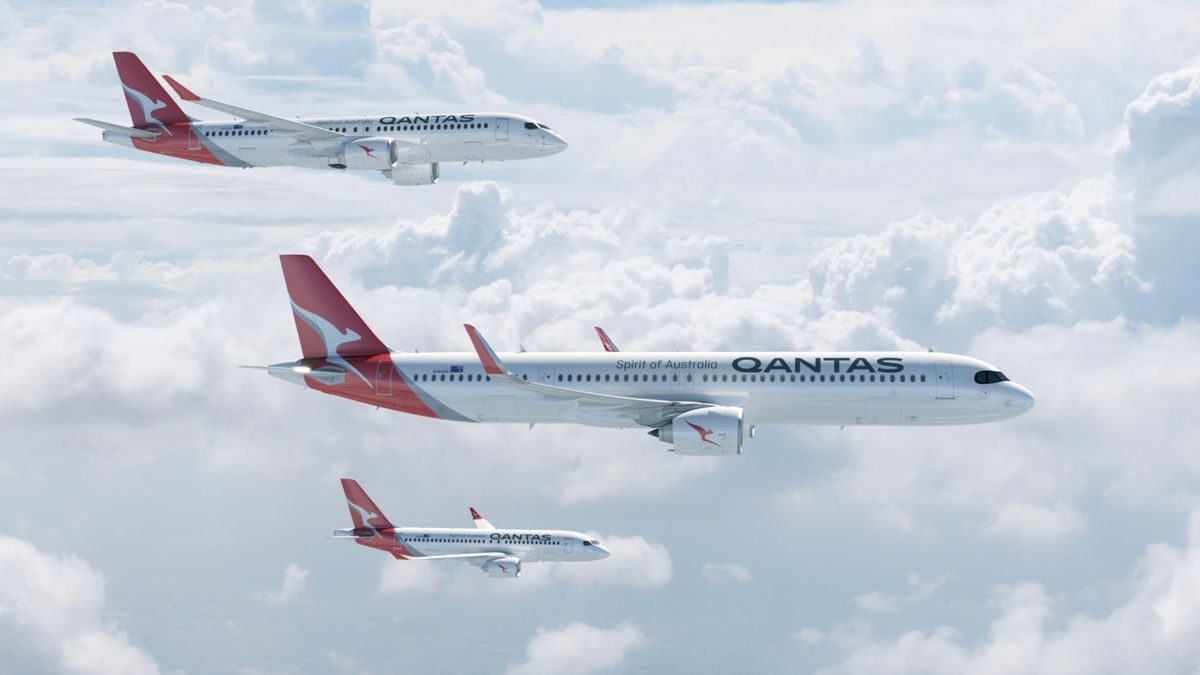Australia’s Qantas Group has selected the Airbus A321neo and Airbus A220 as the preferred models for renewal of its domestic narrow-body fleet, which is set to be the largest aircraft order in the country’s aviation history once finalised.
Qantas says in statement that it has given a firm commitment for 20 Airbus A321XLR (extra long range) and 20 Airbus A220 aircraft, and has a further 94 purchase right options on aircraft over a 10-plus year delivery window, as its existing fleet of Boeing 737-800s and Boeing 717s are gradually phased out.
The purchase right options will provide the company with a firm price and preferred access to delivery slots, allowing it the flexibility to match deliveries to demand, it says.
This order is expected to be finalised at the end of the 2022 financial year following discussions with employees – about arrangements to operate the new aircraft types – and a final decision by the board, Qantas says. The 2022 financial year is from 1 July 2021 to 30 June 2022.
Qantas adds that under a new agreement, this order will be combined with another existing order that its subsidiary Jetstar has for Airbus A320neos. With these two orders, Qantas can draw on a total of 299 deliveries across both A320neo and A220 families as needed over the next decade for Qantas, QantasLink and Jetstar, it says. This will also be the largest aircraft order in Australian aviation history once it has been confirmed, it adds.
The company elaborates that the initial firm order focuses on the larger, single aisle Airbus A321XLR, the mid-size A220-300 and the smaller A220-100, giving it a mix of fleet that can deliver better network choices and route economics.
Qantas further explains that the Airbus A321XLR can carry 15% more passengers than its existing Boeing B737-800s, making the aircraft more suited for busy routes to capital cities like Melbourne, Sydney and Brisbane. The longer range could also open up new routes.
The medium and small sized Airbus A220s allows Qantas the flexibility to deploy these aircraft for its domestic and regional operations, giving it capabilities to increase flight frequencies on key routes and major cities during off peak times, the company adds.
Qantas says that both aircraft types will be powered by the Pratt and Whitney GTF engines and will deliver fuel savings between 15% to 20%, which will help contribute to its emission reduction efforts. The A320neos that were ordered earlier for Jetstar are powered by CFM International LEAP engines, while the 737-800s are an earlier generation aircraft powered by CFM56 engines.
Alan Joyce, CEO of Qantas Group, says in the statement It was a very tough choice to make, but when the company multiplied the small benefits in areas like range or cost across the number of aircraft and over the next 20 years, Airbus was the ‘right choice’.
“The Airbus deal had the added advantage of providing ongoing flexibility within the order, meaning we can choose between the entire Airbus A320neo and Airbus A220 families depending on our changing needs in the years ahead,” he says, adding that the ability to combine the Jetstar and Qantas order for the A320neo-family was also a contributing factor.
He highlights that the A320neo-family will be new for Qantas Domestic. As for the A220, Joyce says it is a versatile aircraft that is popular in the United States and Europe, which has the capabilities to fly regional routes as well as longer sectors between capital cities. While the A320neo family will replace the 737-800s, the A220s are to replace the Rolls-Royce powered Boeing 717s, an out of production aircraft type.
“For customers, that [the A220] means having more departures throughout the day on a smaller aircraft, or extra capacity at peak times with a larger aircraft. The economics of the aircraft also makes it possible for us to start a new regional route,” he says.
“Importantly, these aircraft will deliver a step change in reducing fuel burn and carbon emissions compared with our current fleet, which gets us closer to the net zero target that we have set,” the CEO adds.
Picture Source: executivetraveller.com
Related Stories:
Australia’s QantasLink Secures Final Regulated Queensland Route (7 December 2021)
Qantas Airways In Final Stages To Renew Its Narrowbody Fleet (5 October 2021)

